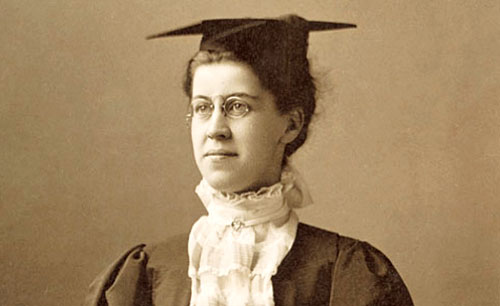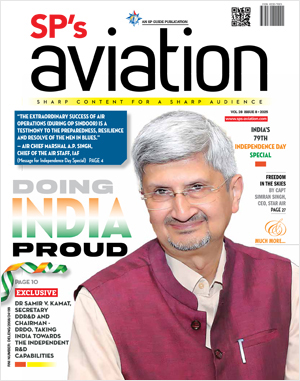INDIAN ARMED FORCES CHIEFS ON OUR RELENTLESS AND FOCUSED PUBLISHING EFFORTS

The insightful articles, inspiring narrations and analytical perspectives presented by the Editorial Team, establish an alluring connect with the reader. My compliments and best wishes to SP Guide Publications.

"Over the past 60 years, the growth of SP Guide Publications has mirrored the rising stature of Indian Navy. Its well-researched and informative magazines on Defence and Aerospace sector have served to shape an educated opinion of our military personnel, policy makers and the public alike. I wish SP's Publication team continued success, fair winds and following seas in all future endeavour!"

Since, its inception in 1964, SP Guide Publications has consistently demonstrated commitment to high-quality journalism in the aerospace and defence sectors, earning a well-deserved reputation as Asia's largest media house in this domain. I wish SP Guide Publications continued success in its pursuit of excellence.
Katharine Wright (1874 - 1929)
Katharine Wright played gracious hostess to the throngs of aristocrats and the rich including King Edward VII of England, who attended her brothers’ flying displays

Orville and Wilbur Wright who designed the world’s first aeroplane top the list of aviation age icons. These pioneering brothers made the first controlled, sustained flight of a powered, heavier-than-air aircraft named the Wright Flyer, on December 17, 1903. Less well known is their sister Katharine Wright. While the brothers were notoriously shy and reclusive, Katharine was charming, vivacious and outgoing – at ease with royalty, commoners and business people alike. She gave the brothers a human face. More tangibly, she provided a little financial support for their aeronautical endeavours. When their intensive experiments with flight began at Kitty Hawk, she competently ran their bicycle shop – directing the workers, paying bills and depositing receipts. The bicycle shop and its profitability were crucial for the enterprise, because it was their only source of income. They had neither government assistance nor private investment. Even after they obtained a patent on the Wright Flyer in 1906, Katharine acted like their Executive Secretary in the daunting task of trying to sell their new machine to reluctant governments. Later she was also a spirited advocate of the Women’s Suffrage Movement in Ohio.
Life had trained Katharine Wright Haskell well for her role. Born in Dayton Ohio on August 19, 1874 – Orville’s third birthday – she was the only girl in a family of five children and the only one to get a college degree. When she was not yet 15, her mother died of tuberculosis and management of the entire Wright household fell on her young shoulders. The youngest child, she was especially close to Orville, who was nearest to her in age. In 1896, Orville came down with typhoid fever and Katharine, by then a high school teacher, helped nurse him back to health.
Another test of her caregiving and supervisory skills came in 1908, when the brothers finally succeeded in convincing a sceptical United States Signal Corps to witness airborne trials of their aircraft for possible purchase. Orville conducted a series of successful and record-breaking flights, with and without passengers. However on September 17, 1908, a propeller broke in flight and sent the aircraft plummeting earthward. While the lone passenger, Army Lieutenant Thomas Selfridge was killed, Orville was seriously injured. On receiving the news, Katharine immediately took a train to Washington. She found her brother at an Army Hospital in Northern Virginia in great pain, with broken ribs and a broken leg. He had also concussed his spinal cord and had severe scalp wounds. For the next seven weeks, her teaching job forgotten, she rarely left his bedside. She dealt with his doctors, received visitors, answered letters and somehow found time to attend to the aircraft business.
The following year, after Orville recovered, the brothers embarked on a demonstration tour of Europe, taking Katharine along. It was a master-stoke. The French immediately took to her and she attracted far more favourable publicity than the brothers could ever have hoped for. She soon learnt French and was able to converse fluently with business prospects and contacts over lunch. She also played gracious hostess to the throngs of aristocrats and the rich including King Edward VII of England, who attended her brothers’ flying displays each afternoon. And when doubts were expressed about the safety of the flimsy looking flying machines, she went up as a passenger, not once but three times, becoming only the world’s third woman to fly in an aircraft. She thus proved the point that air travel was safe even for young ladies.
In November 1926, Katharine, then 51, married her old college friend Henry Haskell and moved to Kansas City. By then, of her four brothers only Lorin and Orville were alive. While Lorin enthusiastically approved of her decision, Orville felt let down by his sister and refused to speak to her ever again. In 1929, Katharine contracted severe pneumonia. Lorin finally managed to persuade Orville to go and visit her. Although she was barely conscious, she recognised Orville and he was with her at the end.
Katharine Wright died on March 03, 1929. The French acknowledged her sterling role in the advancement of human flight by awarding all three Wrights the Légion d’honneur, the highest French decoration and one of the most famous in the world. She remains one of very few American women who have received this award. And she richly deserved it. As a popular magazine of the time put it, “Who was it that gave them new hope when they began to think the problem impossible? Who was it that followed the intrepid brothers everywhere? Who was it that nursed Orville Wright back to strength and health when the physicians had practically given him up after that fatal accident last September, when Lieutenant Selfridge of the United States Army Signal Corps Service lost his life and Orville Wright all but lost his?”





